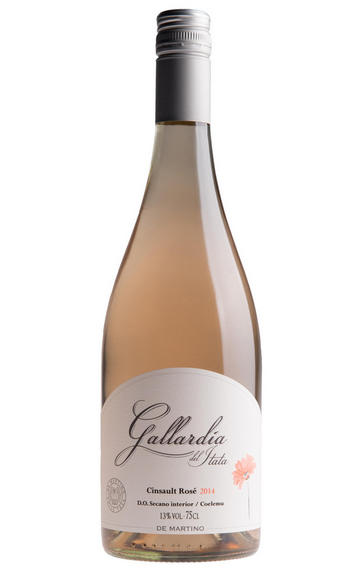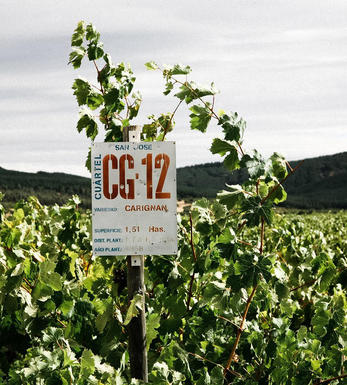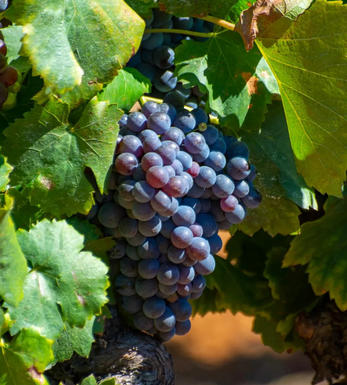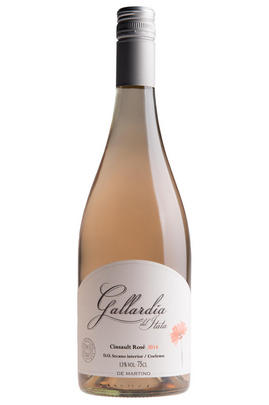
About this WINE

De Martino
De Martino is one of the most progressive and exciting names on the Chilean wine scene, deservedly named Chilean Winery of the year in 2011. Through a network of intellectual partnerships and vineyard acquisition, it has quickly built up a reputation for organic viticulture of the highest quality, farming from over 350 different vineyards.
The corporate vision focuses on sustainability, terroir, and, by logical extension, excellence. By concentrating on the very best sites for the varieties in question, be they in Limari, Elqui or Maipo, and by the development of a world class winemaking team, De Martino now sits at the very top of the Chilean vinous hierarchy.
The Alto Piedras vineyards make up 5 hectares of the sub-Denominacion of the Isla de Maipo, a de facto island as the vines are surrounded by two branches of the Maipo River. Two other self-evident truths are located in the nomenclature; firstly that the terrain is rocky, volcanic gravel to be precise and secondly that the vines are quite high up. Chile’s indigenous grape, Carmenère, is here aged for 18 months in new French oak.

Cinsault
Cinsault (pronounced "sin-so") is a red grape variety known for its versatility and contributions to various wine regions worldwide. It has a rich history, primarily in the Languedoc region of southern France, but it has spread to many other wine-producing areas due to its adaptability to different climates.
Cinsault grapes are medium-sized with thin skins, typically dark blue to black in colour. The vines are hardy and drought-resistant grapevine, making them suitable for warm and arid climates. They are particularly well-suited to Mediterranean regions and thrive in areas with hot summers.
While Cinsault is mainly used in red wine production, it is also sometimes used in rosé wines, adding light and fruity character. It is often blended with other grape varieties to enhance the wine profile.
The variety tends to exhibit a range of flavours, including red berries, cherries, and sometimes a hint of spices. When used in rosé wines, it can bring out more floral and watermelon notes.
Tannins are typically on the lower side, which can make them more approachable and enjoyable in their youth. The variety is often used in blends to soften and round out more tannic grape varieties.
Cinsault has been a key component in traditional blends in southern France, such as in Châteauneuf-du-Pape wines. Over time, it has gained popularity in other wine regions as winemakers recognize its potential for producing high-quality wines.



Buying options
Add to wishlist
Description
A fashionably pale Cinsault rosé but no pale imitation of its Provençal counterparts. Nowhere is Cinsault more highly prized by growers than Chile's Secano Interior DO and this illustrates why. As well as the expected red fruit aromas, there's a delicate floral note to the nose - appropriate, since Gallardía takes its name from a variety of South American daisy. The palate is bone dry, with a little more weight than its colour might suggest, but plenty of acidity.
The finish is not long or particularly complex but to dwell on that is to miss the point, like complaining that a summer dress isn't waterproof. Gallardía is refreshing, balanced, characterful and a versatile match for food. I will be drinking lots of it this summer whatever the weather.
Will Heslop - Buyer The 2014 Gallardía de Itata Cinsault Rosé is a super-pale pink, almost a blanc de noirs. Although the grapes are grown in Itata, the name of the valley cannot be used on the label -- as only 'noble' grapes are allowed under the name; so, it's sold under the appellation Secano Interior. They found a vineyard close to the sea, a fresh place to compensate Cinsault's low natural acidity and the grapes are harvested early. It's a delicate, fresh Rosé, very dry and with good acidity.
This could pass as a blanc de noirs, and the nose is almost of a white wine, floral with white fruit. The palate is lively, with good acidity; it is clean and fresh, and pert for the summer. Perfect now. Drink 2016-2017
De Martino offers an exciting portfolio of fresh, gastronomy-oriented wines. All the wines are produced with indigenous yeasts and without the help of any chemicals and only minimal amounts of sulphur. 2014 is a good vintage, fresh and with naturally limited yields.
90/100 Luis Gutierrez eRobertParker.com #222 Dec 2015
wine at a glance
Delivery and quality guarantee